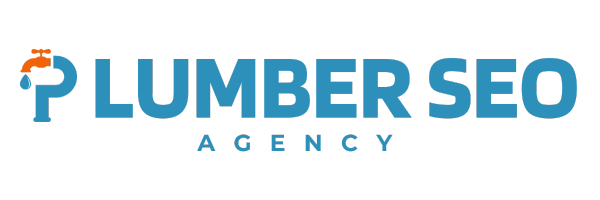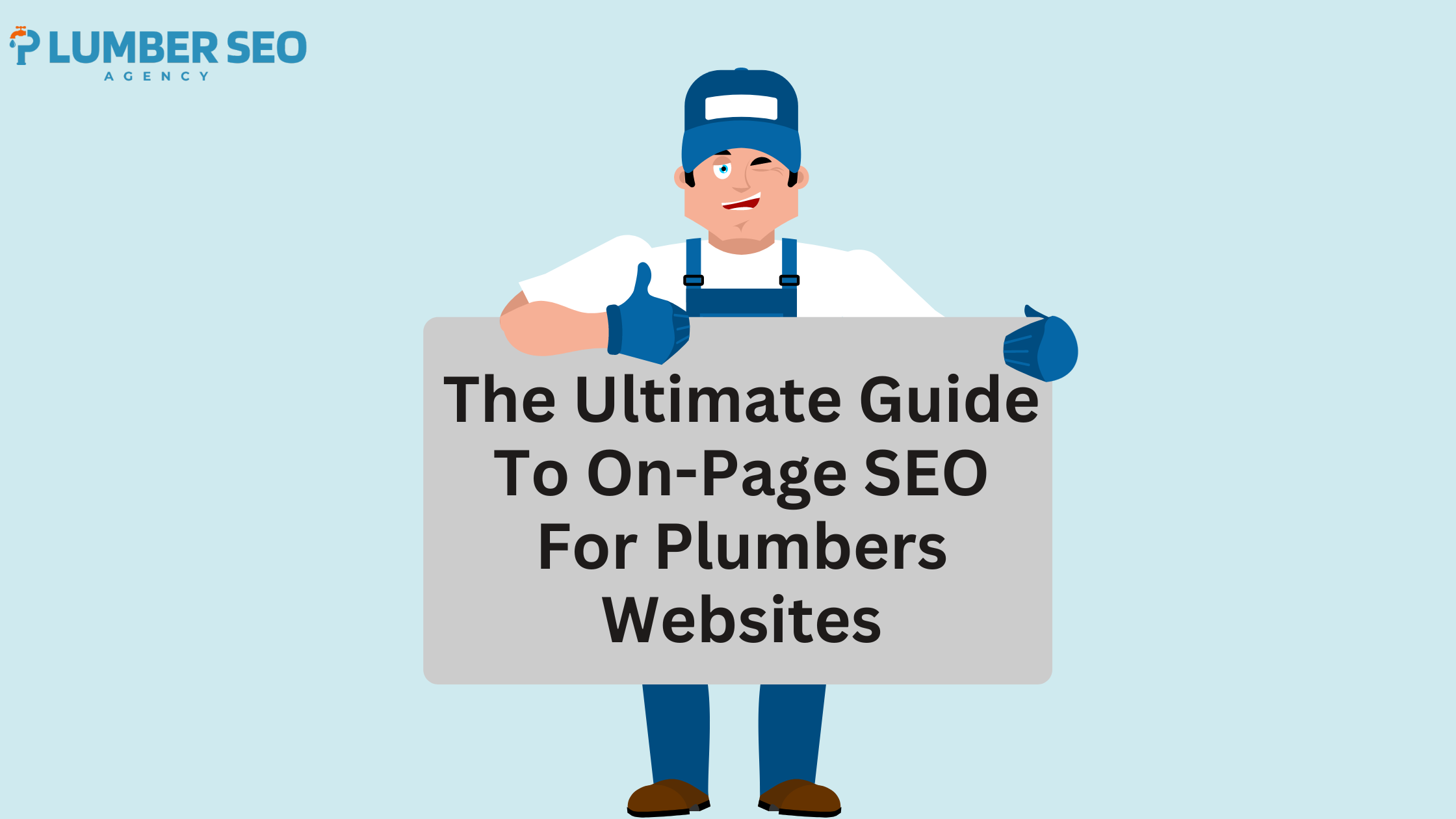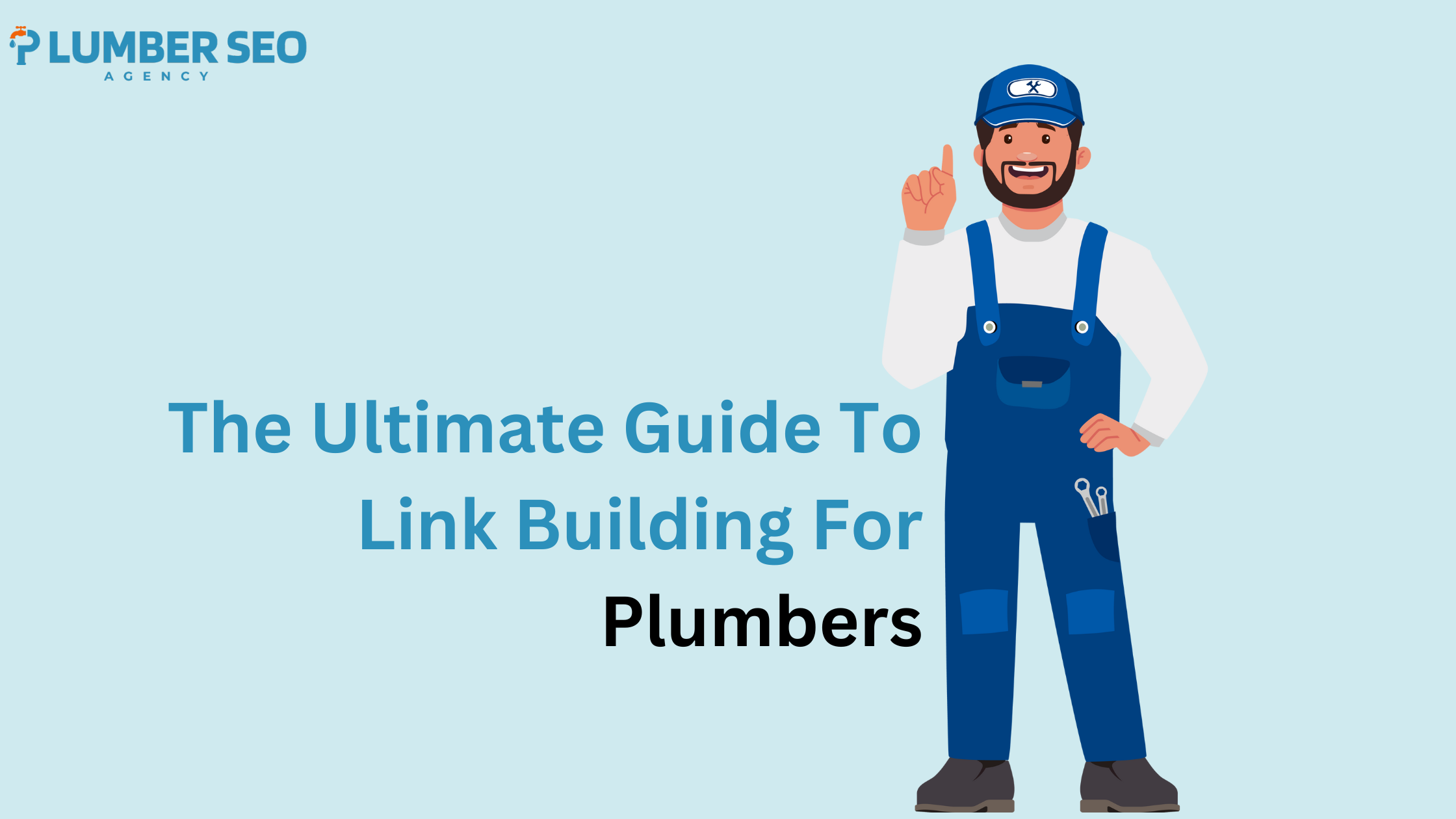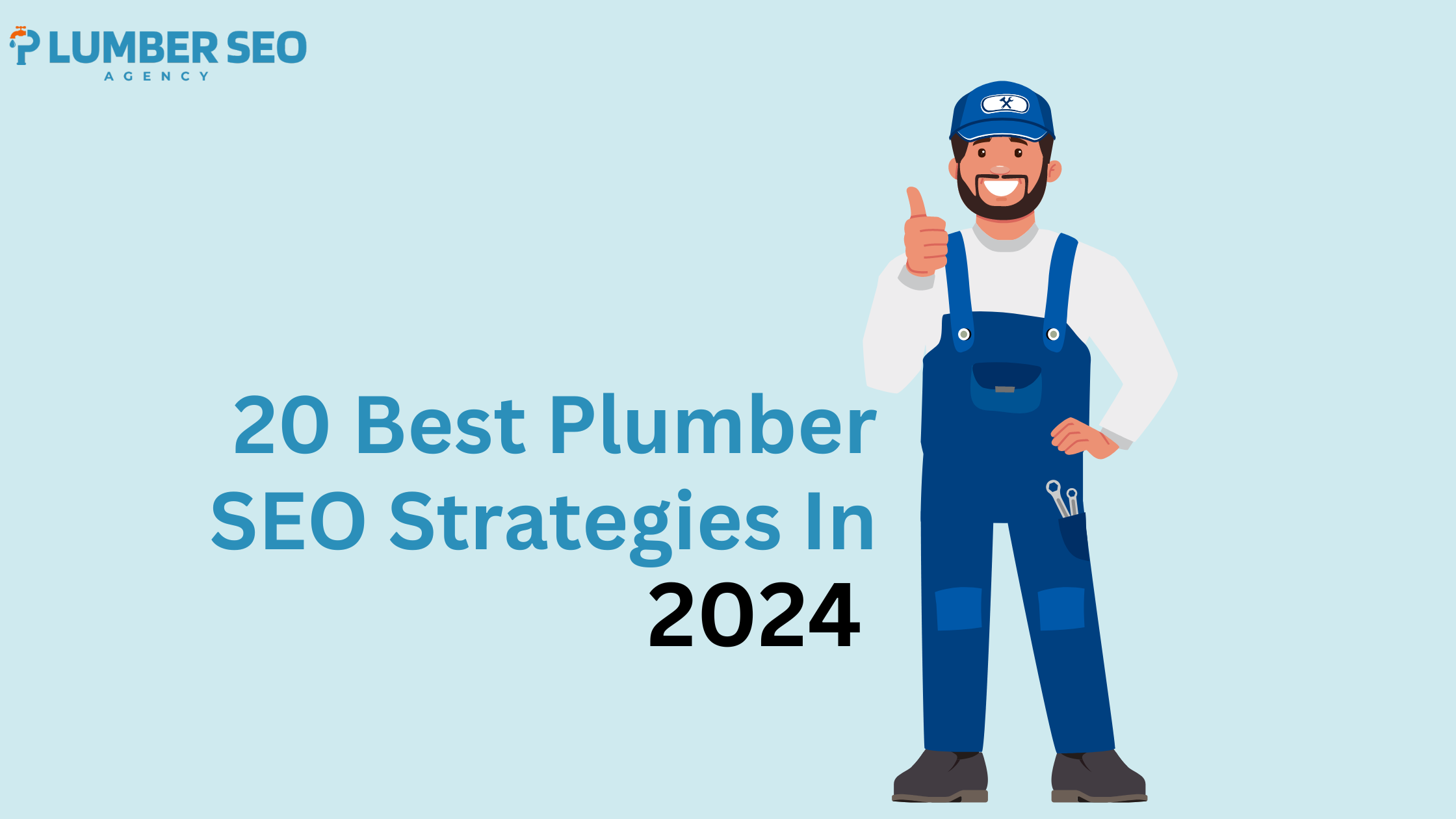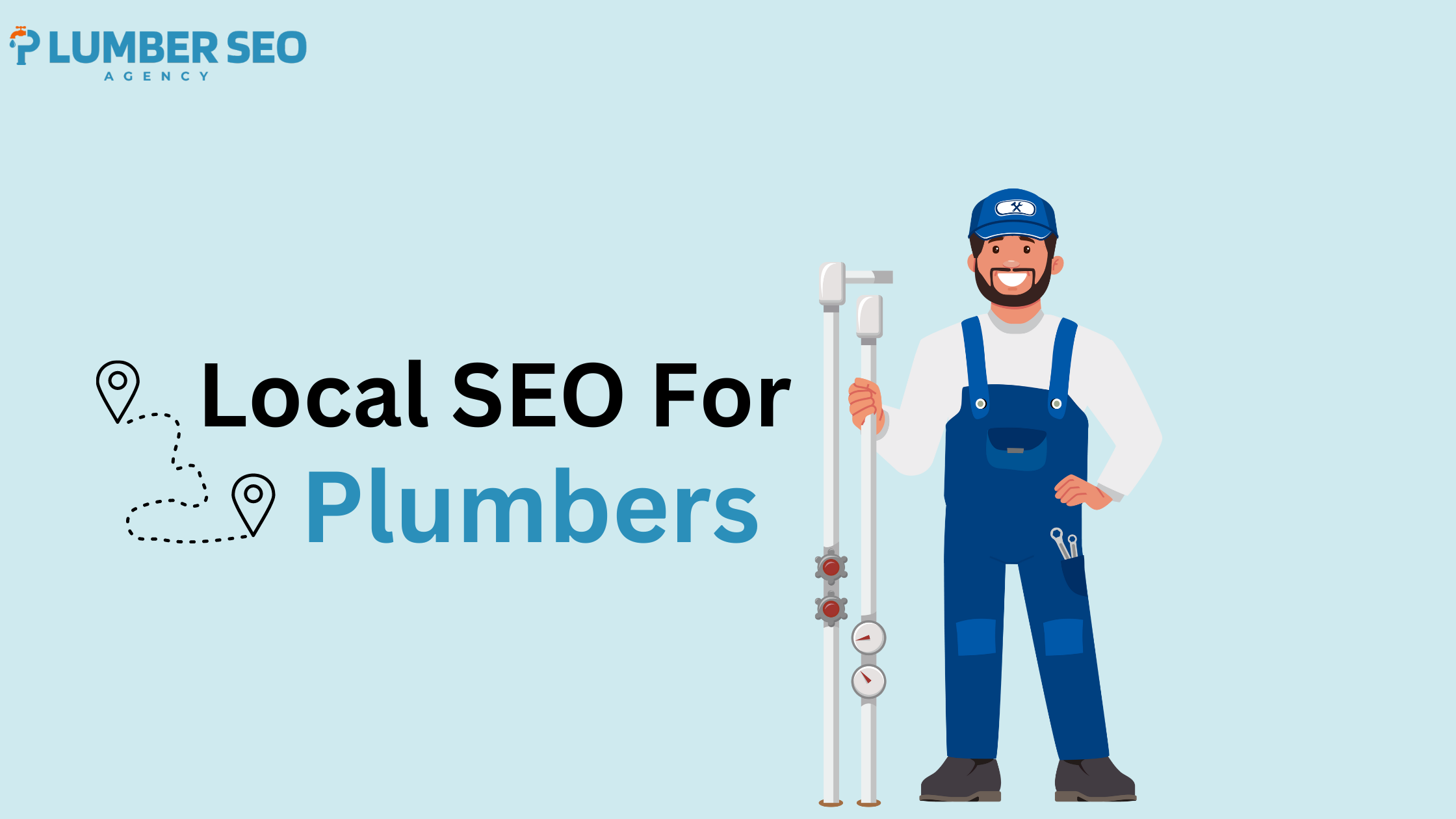In the digital age, having a strong online presence is crucial for businesses in every industry, including plumbing. As potential customers turn to search engines like Google to find local services, plumbing companies need to optimize their websites to appear prominently in search results. This process of optimization, known as Search Engine Optimization (SEO), is multifaceted, but one of its most fundamental aspects is on-page SEO.
Welcome to “The Ultimate Guide to On-Page SEO for Plumbing Websites,” where we’ll delve into the specific strategies and techniques tailored to help plumbing businesses enhance their on-page SEO efforts.
Whether you’re a small local plumbing company or a larger enterprise, understanding and implementing these strategies can significantly improve your website’s visibility, attract more organic traffic, and ultimately, generate more leads and customers.
In this comprehensive guide, we’ll break down the key components of on-page SEO, providing actionable tips and best practices specifically tailored to the unique needs and challenges of plumbing websites.
From optimizing meta tags and content to improving site structure and user experience, we’ll cover everything you need to know to ensure your plumbing website ranks well in search engine results and stands out amidst the competition.
What Is On-Page SEO For Plumbers?
On-page SEO for plumbers refers to the optimization techniques implemented directly on the plumber’s website to enhance its visibility and relevance in search engine results pages (SERPs) for plumbing-related queries. These strategies are aimed at improving the website’s rankings, driving organic traffic, and ultimately attracting more potential customers.
Key components of on-page SEO for a plumber’s website include optimizing meta tags such as “Plumber On-Page SEO services” title tags, meta descriptions, and headers with relevant keywords related to plumbing services, locations served, and specific offerings.
Additionally, ensuring that the website’s content is high-quality, informative, and relevant to users searching for plumbing services is crucial. This can involve creating detailed service pages, and blog posts addressing common plumbing issues or FAQs, and incorporating relevant keywords naturally throughout the content.
Moreover, optimizing the website’s URL structure, internal linking, and image alt attributes with descriptive keywords can further improve its search engine visibility. Properly formatting the content using HTML tags like H1, H2, and bullet points can also enhance readability and SEO performance.
Regularly updating and maintaining the website’s content, fixing broken links, and staying up-to-date with SEO best practices and algorithm changes are essential for long-term success in on-page SEO for plumbers. Overall, on-page SEO is a foundation for attracting organic traffic and converting visitors into customers for online plumbing businesses.
Importance Of On-Page SEO For Plumbers?
In today’s digital era, many individuals rely on search engines like Google to locate plumbers nearby. If your plumbing company doesn’t appear on the first page of search results when someone searches for “plumber near me,” you could be losing out on valuable business opportunities. This is where on-page SEO becomes essential.
On-page SEO involves optimizing various elements within your website to improve its ranking in search engine results pages (SERPs) for relevant searches. By strategically incorporating keywords, optimizing titles and descriptions, and ensuring a user-friendly website, you can enhance visibility and attract more potential customers.
Here’s why on-page SEO is crucial for plumbers:
Increased Visibility: Proper on-page SEO helps search engines understand the nature of your website and its target audience. This boosts the likelihood of your website appearing in search results when individuals in your service area seek plumbing services.
Builds Trust & Credibility: A well-optimized website featuring informative content about your plumbing services and expertise establishes your business as reliable and trustworthy. This can sway potential customers to choose your services over those of competitors.
Targeted Audience: By integrating pertinent keywords throughout your website content, you can attract users actively searching for plumbing services. This ensures that your website traffic consists of potential customers who are more likely to convert.
Established Credibility: A well-optimized website featuring informative content about your plumbing services and expertise fosters trust among potential customers. They perceive you as a professional and dependable plumber.
Local SEO Advantages: On-page SEO strategies synergize with local SEO for Plumbers approaches, bolstering your visibility within your service area. Optimizing your website for local searches can substantially amplify your presence among local clientele.
Cost-Effective Marketing: After integrating on-page SEO best practices, your website functions continuously to attract organic traffic, offering a sustainable marketing approach unlike paid advertising, which ceases when the allocated budget depletes.
Best Practices Of On-Page SEO For Plumbers
These days, more than just having a nice website is needed to get noticed by people looking for a plumber online. You need to make sure your website is set up in a way that search engines like Google can easily find it. That’s where on-page SEO comes in. It’s all about making your website more visible in search results. Here are some simple tips to help your plumbing website show up higher in Google searches.
1. Keyword Research
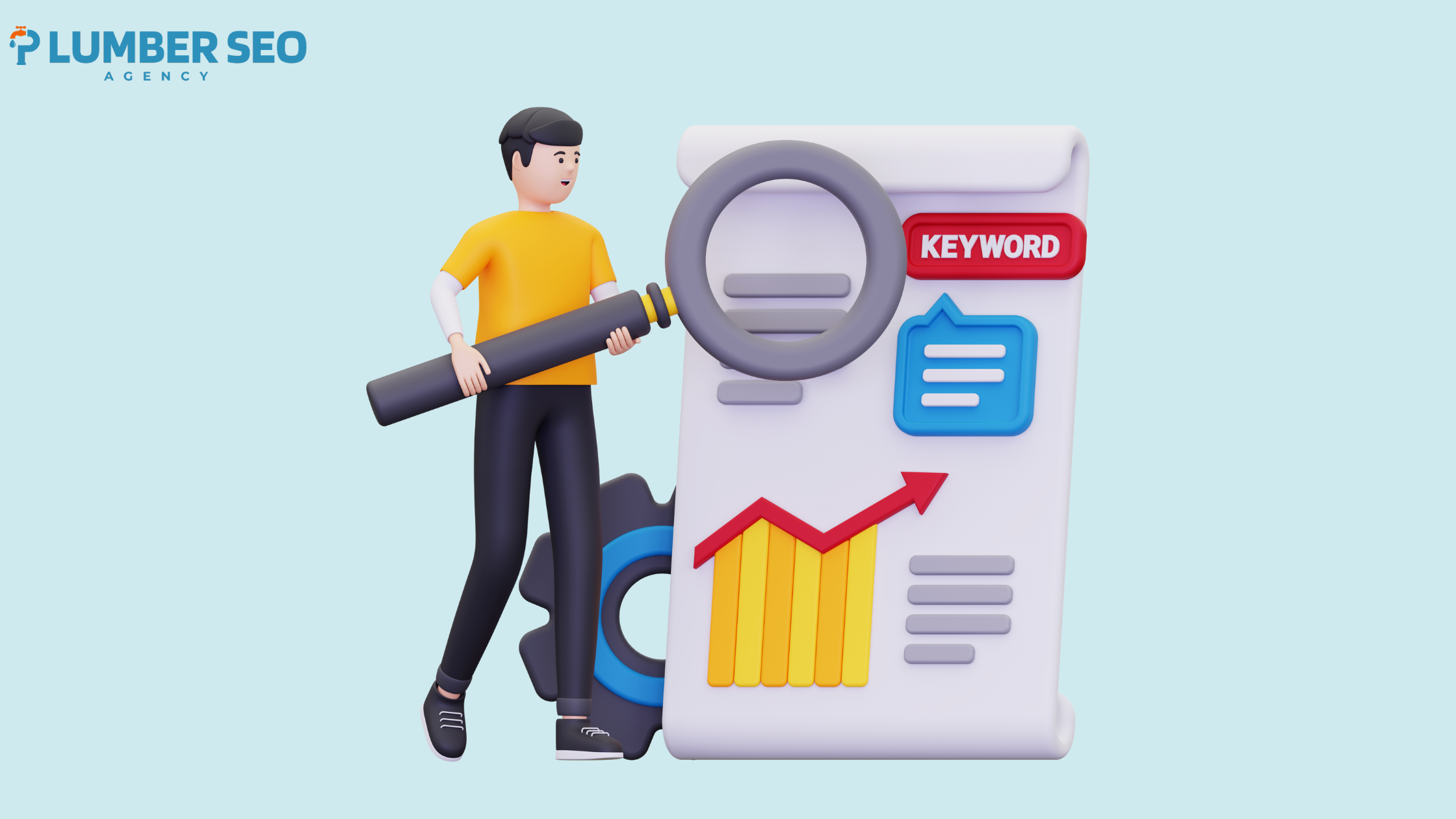
Keyword research is an essential initial step in on-page SEO for your plumbing website. It’s akin to understanding the language your potential customers employ when searching for plumbers online. By strategically integrating these keywords throughout your website, you enhance your chances of achieving higher rankings in search engine results pages (SERPs) for pertinent searches.
Here’s a breakdown of how to conduct effective keyword research for your plumbing website:
- Identify Primary Keywords: Determine the general services you provide. Examples include “plumber near me,” “drain cleaning,” and “toilet repair.”
- Target Long-Tail Keywords: Get more specific! Long-tail keywords are detailed phrases people use when they’re closer to deciding. Examples include “emergency leak repair [your city]” or “kitchen faucet installation cost.” These keywords usually face lower competition, making it easier to rank for them.
- Use Keyword Research Tools: Utilize free and paid tools like Google Keyword Planner, SEMrush, and Ahrefs to discover high-volume, relevant keywords for your plumbing business.
- Analyze Your Competitors: Investigate the keywords your competitors are ranking for. This can provide valuable insights into the terms your target audience might be using.
2. Optimizing Page Titles And Meta Descriptions
Crafting compelling and informative page titles and meta descriptions is essential for optimizing your plumbing website’s on-page SEO. These elements serve as mini-advertisements, influencing both search engines and users. Here’s how to effectively optimize them for your plumbing business:
Page Titles:
- Incorporate Relevant Keywords: Include keywords pertinent to your service area. Research long-tail keywords for specificity, such as “emergency leak repair [city name]” or “drain cleaning for clogged kitchen sink.”
- Keep it Concise: Aim for 50-60 characters to ensure your entire title displays in search results.
- Prioritize User-Friendliness: Craft clear, informative titles that encourage clicks without overloading on keywords.
- Examples: “[City Name] Plumbing Services | [Your Company Name]”, “24/7 Emergency Leak Repair in [City, State]”, “Clogged Drain Solutions – Fast & Reliable Service”
Meta Descriptions:
- Elaborate on the Title: Provide a brief overview of your services and service area.
- Include a Call to Action (CTA): Prompt users to take action, such as “call for a free quote” or “visit our website to schedule an appointment.”
- Maintain Keyword Relevance: While not a direct ranking factor, relevant keywords can enhance click-through rates (CTR).
- Optimal Length: Aim for around 155-160 characters to ensure visibility in search results.
- Example: “[Your Company Name] offers dependable plumbing services in [City, State], specializing in drain cleaning, leak repair, and more. Contact us today for a free quote!”
3. Creating High-Quality Content

Creating high-quality content is crucial for effective on-page SEO. Such content not only attracts visitors but also convinces them of your expertise and signals to search engines that your website is valuable. If you’re in the plumbing industry and seeking to enhance your online presence, investing in Plumber Content Marketing services can be a game-changer. These services focus on crafting compelling content tailored specifically for plumbing businesses, helping you engage with your target audience and establish your authority in the field. Here’s a guide on crafting content that meets all the necessary criteria:
- Understand your audience: Identify your target audience, whether it’s homeowners, property managers, or others, and tailor your content to address their specific needs and concerns.
- Utilize local keywords: Research prevalent plumbing issues in your area and incorporate relevant keywords such as “burst pipe repair in Los Angeles” or “local drain cleaning services.”
- Emphasize benefits: Instead of merely listing your services, highlight how you can solve problems and enhance lives. For instance, discuss the convenience of round-the-clock emergency services or the assurance provided by warranties.
- Ensure clarity and conciseness: Given that people often seek plumbers for urgent situations, use clear and simple language while avoiding technical jargon.
- Organize your content: Break down your content with subheadings, bullet points, and visuals to enhance readability and comprehension.
- Offer comprehensive resources: In addition to basic information, provide valuable content like troubleshooting tips, DIY guides (with clear warnings to consult a professional for complex issues), and seasonal maintenance checklists.
- Optimize for voice search: With the rise in voice-based searches, optimize your content by using natural language and addressing common verbal queries such as “What causes a blocked drain?”
- Maintain freshness: Regularly update your website with new content to demonstrate its activity to search engines and encourage repeat visits from users.
4. Keyword Optimization
Keyword optimization plays a pivotal role in enhancing the visibility of your plumbing website on search engines. By strategically integrating relevant keywords into your website’s content, you can significantly improve your chances of attracting potential customers searching for plumbing services online. Here’s a detailed guide on how to effectively optimize keywords for your plumbing website:
Keyword Implementation:
- On-Page Optimization: Ensure that your selected keywords are seamlessly incorporated into various on-page elements of your website. This includes titles, meta descriptions, headers, and body text. However, it’s essential to maintain a natural flow and avoid overstuffing keywords, as it can be perceived as spammy by search engines.
- Content Creation: Develop high-quality content centered around your targeted keywords. This could encompass blog posts addressing common plumbing issues, DIY guides offering practical solutions (along with a disclaimer encouraging professional assistance for complex issues), or informative pages detailing the range of services your plumbing company provides.
5. Optimize Heading Tags
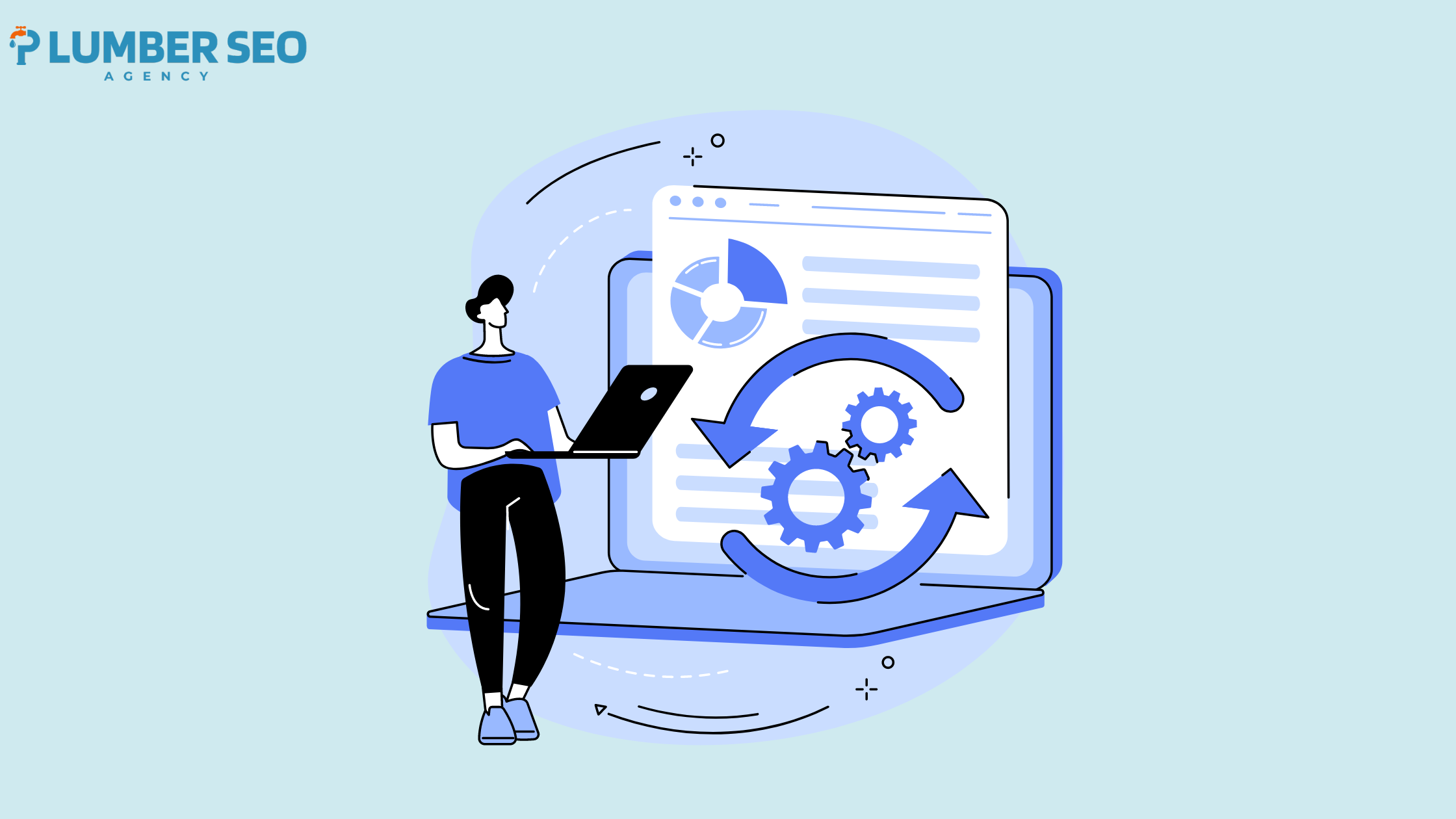
Optimizing heading tags, also known as H tags (H1, H2, H3, etc.), is essential for enhancing the readability of your plumbing website’s content and improving its search engine optimization (SEO) performance. Here’s how you can do it effectively:
- Incorporate Relevant Keywords: Integrate your target keywords naturally into your heading tags to help search engines grasp the context of your page and rank it appropriately. For instance, instead of a generic “Services,” opt for “Leak Repair, Drain Cleaning, and Toilet Installation Services.”
- H1: The Primary Heading: The H1 tag serves as the main title of your page and carries significant weight in SEO.
Make it succinct, clear, and include your primary keyword. For example: “Trusted Local Plumber in [Your City] | [Your Business Name].”
- H2s: Organizing Content Sections: H2 tags function as subheadings, organizing your content into manageable sections.
Assign them to each major service you provide or specific topics addressed on the page. For example: “Drain Cleaning Services,” “Fixture Repair,” “Emergency Plumbing.”
- Utilize H3s for Detailed Subsections (Optional): H3 tags offer further granularity within your H2 sections, especially useful for intricate topics or listing multiple services within a category.
For example, under “Drain Cleaning Services,” you might include H3s for “Clogged Kitchen Sink Repair” or “Toilet Drain Augering.”
- Maintain a Logical Structure: Ensure a coherent hierarchy: H1 -> H2 -> H3. Avoid skipping from H1 directly to H3.
Employ a mix of heading tags to create a well-structured and organized layout for your content.
6. URL Structure
Crafting effective URLs is crucial for enhancing your plumbing website’s visibility on search engines. Follow these strategies to optimize your URL structure for improved SEO:
- Descriptive Clarity: Ensure your URLs accurately depict the page content. Instead of generic terms like “page1.html,” opt for descriptive phrases such as “emergency-plumbing-services.html.”
- Keyword Integration: Incorporate relevant keywords naturally into your URLs, but avoid overloading them. Prioritize readability while including essential terms that users might search for.
- Hyphen Separation: Use hyphens to separate words within your URLs, enhancing readability and aiding search engine understanding. For instance, opt for “broken-drain-repair” over concatenated phrases.
- Concise Length: Aim for concise URLs, ideally under 60 characters, to prevent truncation in search results. Shorter URLs are easier to remember and share, contributing to better user experience.
- Category Organization: Employ a logical folder structure, especially for intricate websites, to categorize your content effectively. For example, “services/drain-cleaning” offers clarity and hierarchy for a drain cleaning service page.
- Static URL Format: Prefer static URLs over dynamic ones containing parameters like “?id=123.” Static URLs are more search engine-friendly and provide stability and predictability for indexing.
- Example:
Good URL: “location/residential-plumbing”
Avoid: “index.php?p=services#drain-cleaning”
7. Image Optimization

Optimizing images on your plumbing website is crucial for both user engagement and SEO. Follow these steps to ensure your images are working effectively:
- Relevant Images: Utilize high-quality visuals directly showcasing your plumbing services. Genuine images of your team in action or your completed projects build trust and credibility.
- File Size: Large image files can slow down your site, impacting SEO negatively. Prior to uploading, resize images using free online tools to ensure optimal loading speed.
- Descriptive File Names: Avoid generic names like “IMG_001.jpg”. Instead, opt for descriptive names containing relevant keywords such as “clogged-drain-repair.jpg” to enhance search engine visibility.
- Alt Text: Provide concise, keyword-rich descriptions in alt text. This not only aids users when images fail to load but also boosts SEO by providing context to search engines.
- Captions: Utilize image captions to offer additional information and incorporate keywords naturally. This enhances both user understanding and search engine relevance.
8. Internal Linking
Internal linking is a fundamental practice for optimizing on-page SEO on plumbing websites. It involves strategically linking to other pertinent pages within your own website, aiding search engines in comprehending your site’s structure and the connections between various pages. Here’s how you can effectively utilize internal linking for your plumbing website:
- Strategic Linking: Rather than scattering links randomly, target specific keywords and phrases within your content. Link these to pages that offer deeper insights on the respective topics. For example, within a service page discussing drain cleaning, you might link to a blog post offering detailed advice on preventing clogged drains.
- Breadcrumbs: Implement breadcrumb navigation on your site. These navigation aids display users’ current location within your website’s hierarchy. Breadcrumbs enhance user experience and also assist search engines in understanding your website’s organization.
- Deep Linking: Avoid limiting links solely to your homepage or service pages. Instead, link to informative blog posts, FAQs, and other relevant content across your site. This distributes link equity throughout your website and ensures comprehensive indexing by search engines.
- Descriptive Anchor Text: Anchor text, the clickable text in a hyperlink, should be descriptive and incorporate relevant keywords. Instead of generic phrases like “click here,” opt for anchor text that provides context. For instance, when linking to your “about us” page, use anchor text like “learn more about our team.”
9. Mobile Optimization
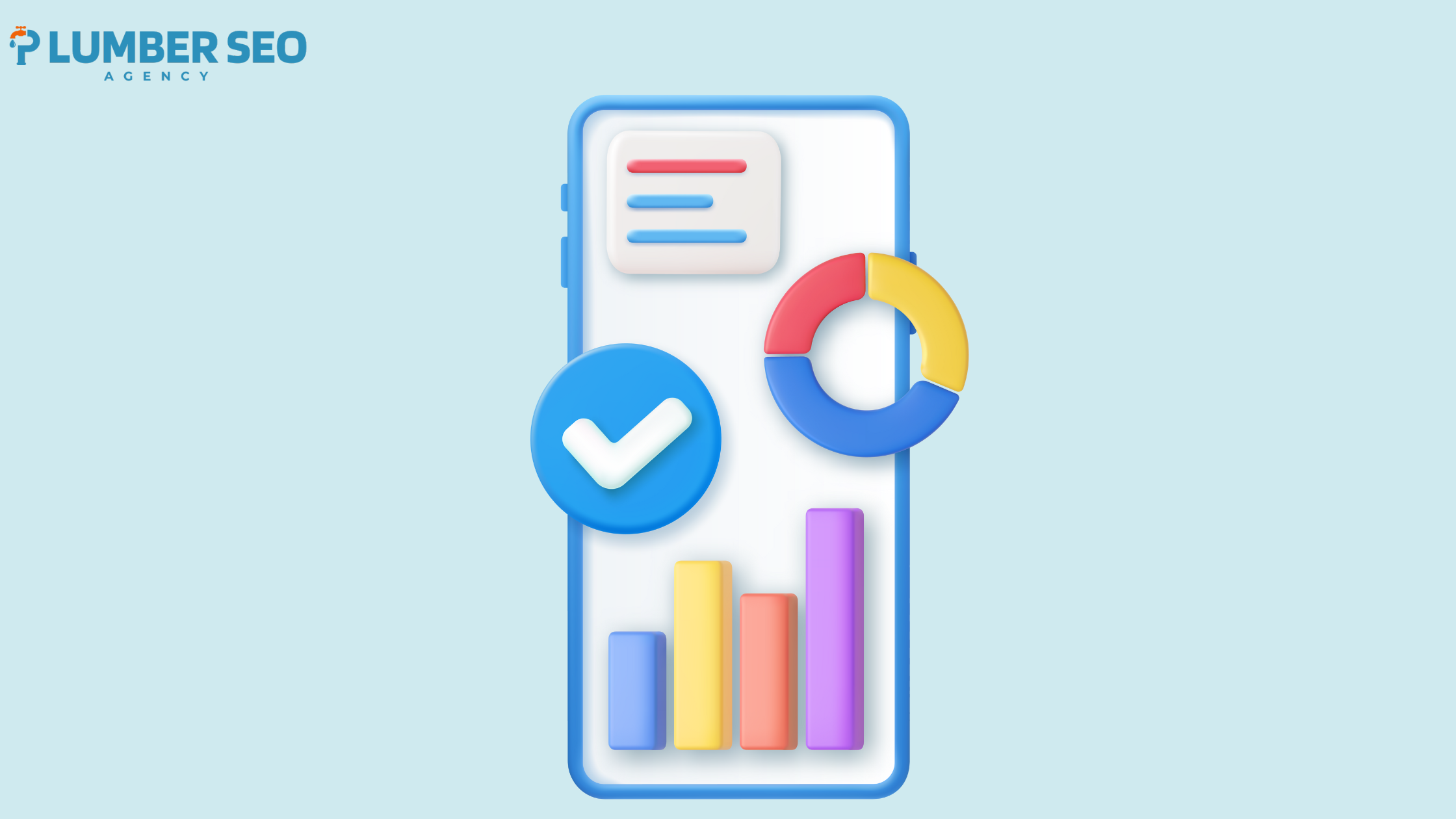
In today’s mobile-centric era, it’s absolutely crucial to ensure that your plumbing website is optimized for smartphones and tablets. Here’s why:
- Mobile Dominates Searches: A significant portion of searches for local services, including plumbing, occur on mobile devices. If your website isn’t mobile-friendly, you’re missing out on potential customers.
- Improved User Experience: A responsive website that adjusts seamlessly to different screen sizes provides a user-friendly experience across all devices. If users encounter difficulties like clunky navigation or unreadable text on your site, they may simply turn to a competitor.
- Search Engine Boost: Google prioritizes mobile-friendly websites in its search results. By adopting a responsive design, you can give your plumbing website an edge in rankings.
Here’s how to optimize your plumbing website for mobile:
- Responsive Design: Ensure your website layout automatically adjusts to fit various screen sizes, making text, images, and buttons easily visible and accessible on mobile devices.
- Fast Loading Speed: Mobile users expect swift load times, even on slower connections. Optimize your website by reducing image sizes, minimizing redirects, and employing caching techniques.
- Large Tap Targets: Make sure buttons and other clickable elements are large enough to be easily tapped, especially on smaller screens.
- Legible Font Size: Text should be sized for readability on mobile screens, avoiding overly fancy fonts that may be hard to decipher.
- Click-to-Call Functionality: Simplify the process for mobile users to contact you directly by including a click-to-call button that initiates a phone call with a single tap.
- Local SEO Optimization: Display your address, phone number, and business hours prominently and correctly formatted for mobile search results, enhancing your visibility in local searches.
10. Page Speed
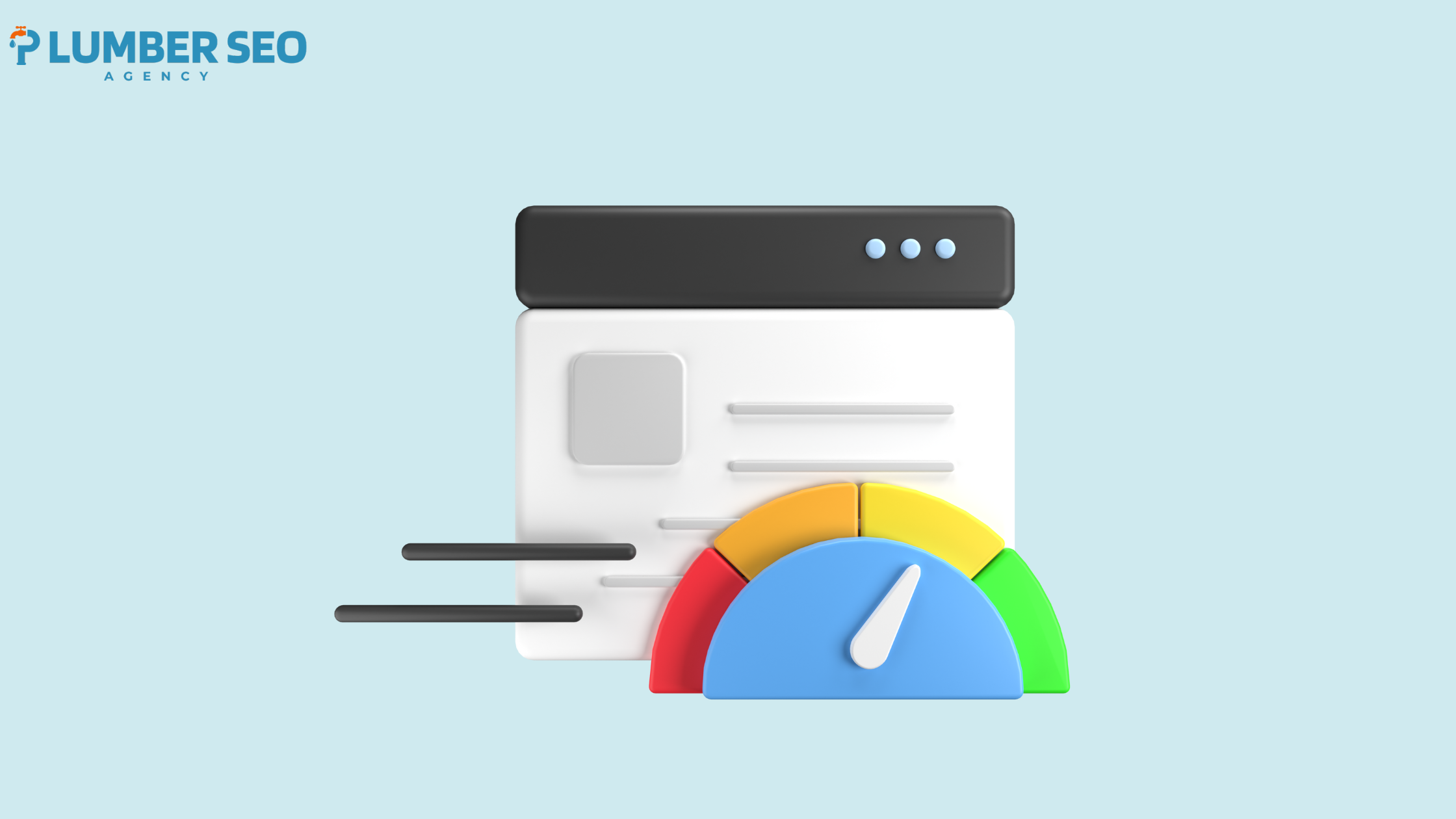
In the plumbing business, responsiveness is crucial, and the same principle applies to your website. Page speed refers to how quickly your website loads, and a slow website can frustrate potential customers who are likely in urgent need of assistance. Here are some essential steps to enhance your website’s page speed:
- Image Optimization: Large images can significantly slow down your website. Resize images before uploading and consider utilizing image compression tools.
- Code Minification: Minifying website code involves removing unnecessary characters and whitespace, thus making it load faster. Various plugins are available to assist with this process.
- Reduce HTTP Requests: Each element on your website (images, scripts, etc.) necessitates an HTTP request. By minimizing unnecessary elements, you can improve loading speed.
- Browser Caching: Caching allows browsers to store website elements locally, eliminating the need to download them every time a visitor returns to the site.
- Choose a Fast Web Host: Opt for a reliable web hosting provider with robust infrastructure, as this significantly impacts website speed.
Conclusion
In conclusion, mastering on-page SEO for Plumbers is indispensable for plumbing websites aiming to thrive in today’s digital landscape. By implementing the strategies outlined in this comprehensive guide, plumbing businesses can significantly enhance their online visibility, attract targeted traffic, and ultimately convert more leads into customers.
From conducting thorough keyword research to crafting compelling page titles and meta descriptions, creating high-quality content, optimizing heading tags, and ensuring mobile responsiveness, each aspect of on-page SEO plays a crucial role in improving search engine rankings and user experience.
Furthermore, internal linking and image optimization strategies contribute to a well-structured website that is easy to navigate and understand for both users and search engines. By optimizing URLs and embracing local SEO tactics, plumbing businesses can further solidify their presence in local search results, attracting customers within their service areas.
Ultimately, on-page SEO for Plumbers serves as the cornerstone of a successful digital marketing strategy for plumbing companies, enabling them to stand out amidst competition, build trust and credibility with potential customers, and drive sustainable business growth over the long term. By continually refining and adapting their on-page SEO efforts in line with evolving search engine algorithms and user behaviors, plumbing businesses can maintain a competitive edge and achieve lasting success in the online marketplace.
How does On-Page SEO differ from Off-Page SEO for plumbers?
On-Page SEO involves optimizing elements on your website itself, such as content, meta tags, and HTML code. Off-Page SEO focuses on external factors like backlinks and social signals. Both are essential for a comprehensive SEO strategy, but On-Page SEO directly impacts your website’s performance in search results.
Is it necessary for plumbers to have a blog for effective On-Page SEO?
While having a blog can be beneficial for On-Page SEO, especially for regularly publishing fresh and relevant content, it’s not mandatory. Plumbers can still optimize their main service pages with valuable information and keywords related to their services.
How can plumbers optimize their website for local search?
Plumbers can optimize their website for local search by including location-based keywords in their content and meta tags, creating a Google My Business profile with accurate business information, obtaining local business citations from online directories, and encouraging satisfied customers to leave positive reviews.
How long does it take to see results from On-Page SEO efforts for plumbers?
The timeline for seeing results from On-Page SEO efforts can vary depending on various factors such as the competitiveness of keywords, the quality of optimization, the frequency of content updates, and search engine algorithm updates. Generally, it can take several weeks to months to see significant improvements in search engine rankings and organic traffic.
How often should plumbers update their On-Page SEO strategies?
On-Page SEO is an ongoing process that requires regular monitoring and adjustments. Plumbers should continually review their website’s performance, analyze keyword trends, stay updated on search engine algorithm changes, and adapt their strategies accordingly to maintain or improve their search engine rankings and visibility.
